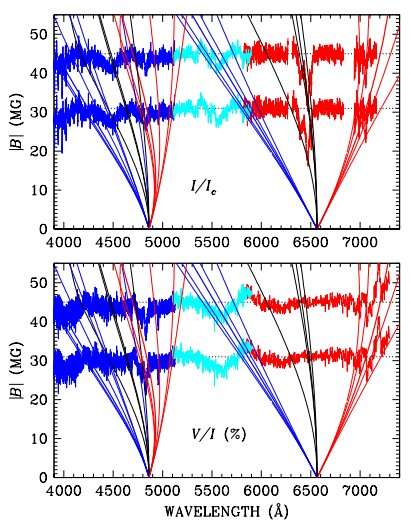June 23, 2023 report
This article has been reviewed according to Science X's editorial process and policies. Editors have highlighted the following attributes while ensuring the content's credibility:
fact-checked
peer-reviewed publication
trusted source
proofread
White dwarf's strong magnetic field fooled scientists into thinking it would pass close to our solar system, study shows

A trio of astronomers from Armagh Observatory & Planetarium and Centro de Astrobiología (CAB), CSIC-INTA has found that a white dwarf that was recently projected to make its way toward our solar system will not do so.
In their study, accepted for publication in The Astrophysical Journal, and now available on the preprint server arXiv, John Landstreet, Eva Villaver and Stefano Bagnulo showed that the strong magnetic field of the white dwarf WD 0810–353 fooled other scientists into projecting that it would travel toward the Oort Cloud at the outskirts of our solar system.
WD 0810–353 was first spotted back in 2018. At the time, astronomers noted that it was a white dwarf. Earlier this year, a pair of Russian astronomers added it to a list of astral candidates to watch over the long term as they could one day wander near to the solar system. They found it was traveling at approximately 373.7 km/sec, which would have it passing through the Oort Cloud in approximately 29,000 years, and putting it within 0.49 light-years of the sun.
Shortly thereafter, a team in Spain found new evidence suggesting that the dwarf was not, in fact, heading our way. This change in projection was due to a recalculation of its speed—they found it was traveling at 4,200 km/sec. In this newest effort, the researchers took an even closer look at the white dwarf, its speed and its likely path in the future. Their work began by investigating the white dwarf's magnetic field.
In studying the hydrogen alpha line, the research team found it was shifted toward the bluer part of the spectrum, which, they note, was caused by the dwarf's abnormally strong magnetic field. That could make it appear to be moving straight at us. By taking a more precise measurement of its speed, they found it was just 83 km/sec. Their conclusion is that the white dwarf is not on a course that would bring it close to our solar system.
More information: J.D. Landstreet et al, Not so fast, not so furious: just magnetic, arXiv (2023). DOI: 10.48550/arxiv.2306.11663
Journal information: Astrophysical Journal , arXiv
© 2023 Science X Network





















